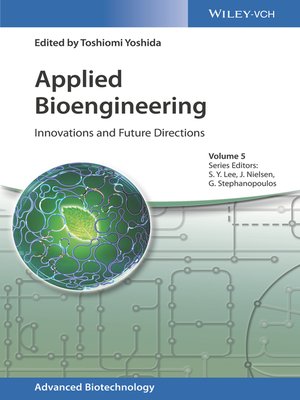Applied Bioengineering
ebook ∣ Innovations and Future Directions · Advanced Biotechnology
By Toshiomi Yoshida

Sign up to save your library
With an OverDrive account, you can save your favorite libraries for at-a-glance information about availability. Find out more about OverDrive accounts.
Find this title in Libby, the library reading app by OverDrive.



Search for a digital library with this title
Title found at these libraries:
| Library Name | Distance |
|---|---|
| Loading... |
A comprehensive overview of the topic, highlighting recent developments, ongoing research trends and future directions.
Experts from Europe, Asia and the US cover five core areas of imminent importance to the food, feed, pharmaceutical and water treatment industries in terms of sustainable and innovative processing and production. In the field of enzyme engineering, they summarize historic developments and provide an overview of molecular enzyme engineering, while also discussing key principles of microbial process engineering, including chapters on process development and control. Further sections deal with animal and plant cell culture engineering. The final section of the book deals with environmental topics and highlights the application of bioengineering principles in waste treatment and the recovery of valuable resources.
With its cutting-edge visions, extensive discussions and unique perspectives, this is a ready reference for biotechnologists, bioengineers, bioengineers, biotechnological institutes, and environmental chemists.
Experts from Europe, Asia and the US cover five core areas of imminent importance to the food, feed, pharmaceutical and water treatment industries in terms of sustainable and innovative processing and production. In the field of enzyme engineering, they summarize historic developments and provide an overview of molecular enzyme engineering, while also discussing key principles of microbial process engineering, including chapters on process development and control. Further sections deal with animal and plant cell culture engineering. The final section of the book deals with environmental topics and highlights the application of bioengineering principles in waste treatment and the recovery of valuable resources.
With its cutting-edge visions, extensive discussions and unique perspectives, this is a ready reference for biotechnologists, bioengineers, bioengineers, biotechnological institutes, and environmental chemists.







